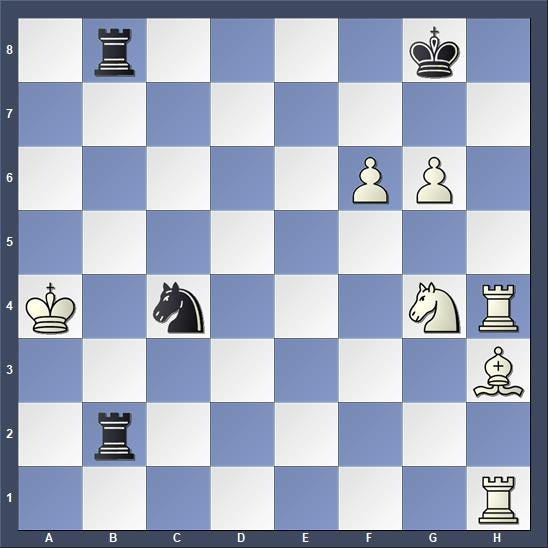The Best Bishop vs. Knight Exchange Ever
Demis Hassabis, DeepMind CEO and founder, wins a Nobel Prize
Earlier this month, DeepMind founder and one time chess prodigy Demis Hassabis won a Nobel Prize in chemistry for developing AlphaFold. He was also knighted earlier this year. And he’s only 48.
It all started with a chess move. As reported in CNBC, back in 2010, Hassabis needed capital to fund his AI lab. He strategized how to impress investor and Paypal founder Peter Thiel, who is also a chess master. "I spent months thinking about how I would use the one minute I had to speak to him.”
Hassabis ultimately seized on an appropriately nerdy topic: the bishop vs the knight. “I think the secret [of chess] is that the bishop and knight are worth three points each but have such different powers.”
The one-minute bishop vs. knight conversation starter worked. Thiel was intrigued, earning Hassabis another meeting, after which Thiel ended up investing over two million dollars in DeepMind. This was the support Hassabis needed to get the AI research company up and running in London. Four years later, Google bought the company for $650 million. Peter Thiel himself made over $100 million from the conversation. The short chat was the most valuable knight for bishop exchange of all time.
The balance between knight and bishop wasn’t always so perfect. In the ancient predecessor to chess, Shatranj, the queen and the bishop were the weakest pieces on the board. The queen or the ferz moved one square diagonally. The old bishop could jump over pieces two squares diagonally, which sounds exciting until you visualize the movement. The old bishop or alfil1 only had access to 25% of the squares on the chess board. An unbearably weak piece.
At least the Shatranj bishop brought this breath-taking chess gem known as at the Dilaram problem2 c. 10th century. Answer here3.
Compared to the bishop, the metamorphosis of the Chess Queen from weakest to strongest piece on the board was far more dramatic, an enduring metaphor for female empowerment that I’ve explored in my books, and in art projects like Not Particularly Beautiful.
But the bishop’s glow-up was just as crucial to the game balance of chess, even if less controversial or symbolic. Prior to the change, the knight was far superior. The stronger bishop added fungibility to the game as the knight and the bishop became approximately equal in value.
Openings like the Nimzo, the Ruy Lopez debate the two pieces in the very first moves, while entire books have been written comparing the piece’s relative strengths and weaknesses. Every game, every time, we have to wonder, “Should I trade this bishop for that knight?”
And there are many such questions, well beyond chess. Do you want an apartment that gives you a shorter commute and more time, or take the one that gives you more space? There’s no obvious answer until you get into the nitty gritty details of the question. You have to keep asking, over and over.
Other games have their own knight vs bishop. In No-limit hold 'em, the classic race of a pocket pair against two overcards adds volatility to tournaments. The pair has an edge in such all-in confrontations, as commentator Joe “Stapes” Stapleton’s running set-up goes: “Like [X] vs [Y], one of these hands has a slight mathematical advantage over the other.”
One piece also has a small edge in the battle of the so-called “minor pieces” of chess. Bishops have long been favored by Grandmasters4. And DeepMind’s AlphaZero, which taught itself GO, shogi and chess from scratch, also has an opinion on the question. In a 2020 paper on chess and game balance, DeepMind researchers placed the value of a bishop at 3.33 pawns in aggregate, ahead of the knight at 3.05.
Well, the value was unlikely to be exactly equal anyway. They are different, after all.
Alfil is the Arabic word for elephant. The bishop is still called an elephant in Hindi and in Russian, while in some languages the bishop is best translated as the fool or a jester.
Remember, Nh6+ Kf8 g7+ Ke8 g8 is not that strong, since the promotion to a queen/ferz was mandatory at the time, and the queen only moved one step diagonally.
1. Rh8+! Kxh8 2. Bf5+ Kg8 3. Rh8+ Kxh8 4. g7+ Kg8 5. Nh6#
But not in bullet! Take the sage advice from Grandmaster Hikaru Nakamura, who says a knight is better vs a bishop in time scrambles because you can put your king on the opposite color of your opponent’s bishop to avoid all checks.







Unfortunately, Peter Thiel's other bit of notoriety was his financial support of JD Vance's 2022 Senate campaign.
Good one, Jen. Evocative in the best of the chess as life and life as chess tradition…